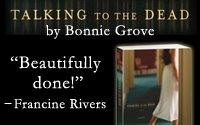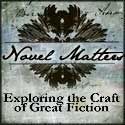
I was browsing a large bookshop in Saskatoon and nearly tripped over a table pushing a debut novel called Notes on the Refrigerator Door by Alice Kuipers (a fellow ‘Toontown dweller). I flipped through and discovered the entire book is a collection of short (even weensy) notes between a teenage girl and her mother. I thought – perfect bathroom reading.
I checked at the cash register. “How’s this one been selling?” The answer was the proverbial ‘hot cakes’ one.
While I don’t think it should be said the novel is being re-invented, I do see it is evolving (or de-evolving depending on your point of view) into something even Yann Martel hadn’t expected. It’s the dawning of the hyper-novel. Devoid of setting, descriptive, and, to a large extent, context, these hyper-novels take time to explore only the essentials. They get to the story and they drive it home fast.
And they sell just as fast. Why?
Because the hyper-novel didn’t just invent itself. It has come about in reaction to the changing demands of the reader.
Some say that the world is an increasingly busy place and busy people aren’t as inclined to take the time to read like they used to. I suppose so, but I think that is only part of the picture. The larger chunk – the one that commands most of the attention is the internet.
Today’s book buyer is not just an internet user; she is internet savvy. She is adept at creating universes in her imagination in milliseconds. She shops online, mentally creating a pleasant store environment where she can browse, buy, and leave with ease. When she requires information she can query international resources within seconds, tracking and comparing answers until she finds what she needs. She chats online with friends and strangers, interacting in space and time without benefit of an actual meeting place. She simply creates the environment in her head and then mentally and emotionally moves around in it.
She doesn’t need help creating the world in which characters can meet, interact, and live out a story line. She can do that herself. Just give her the essence and she will run with it.
Writers are responding to the shift. We hear the drum beat in the jungle pounding out the command: Get to the action! We stop –mid sentence – writing the glorious details of the country garden in which we have place our characters and go in search of short, pithy, pointed descriptions that give the reader the feel of a country garden without clonking the reader over the head with the red, red roses.
We search our brains for what Spunk & Bite author Arthur Plotnik calls the ‘megaphore’. That one-of-a-kind kapow metaphor that sums up (in as few scant words as possible) the universe of which we write. While Virginia Woolf fans weep, and D.S. Lawrence spins in his grave, we, the writers, slice off descriptive. We, as they say in the movies, ‘cut to the chase’. We do so, not because it’s the best way (is it?), but because, if we have hope of being published, it’s what we must do.
There are limits, of course. If your hero needs to dismantle a bomb –timer counting down – you can hardly have him fiddle with some wires and Ga-Zonk! Save the day. Still, it’s enough to know your hero is travelling on a speeding train that’s set to go up like a fireworks factory; the reader doesn’t want you to tell her what color the train is.
The affect of the internet on readership cannot be underestimated. Spend time online, and as you do, think like a writer. Catalogue your experience regarding your ability to create an environment in which you move through cyber-space. Notice how intuitive it is. Examine the few clues you need in order to fully understand and navigate through what is, essentially, a make believe place. And keep this information in mind when you sit down to write.









3 comments:
Bonnie, ideas explode from this post like goodies from a whacked pinata,to use what I call a megaphor (note spelling). Sure, there have long been epistolary novels or telephone-conversation novels that circumvent a narrator's descriptive passages. But you're on to something---maybe a little frightening---in observing the new, Internet-trained reader's impatient approach to storytelling and framework. It raises some mighty aesthetic questions: How much of the fictional world does the author want to control, how much leave to a reader's possibly off-message imagination?
I would hope to have both lean and richly imagined styles around to choose from. A steady diet of Post-Its novels would leave me famished, hungering for the textured narrative of Annie Proulx, Martin Amis, and the like.
All the best to you and your blogmates.
Arthur Plotnik, author, Spunk and Bite: A Writer's Guide to Bold, Contemporary Style.
Arthur,
Thank you for your encouraging and kind comments. I appreciate your book Spunk and Bite, and refer to it whenever I feel my fiction flagging. I’m sorry for misspelling megaphor. I often find an over abundance of the letter 'e' and end up slapping them anywhere.
As to the smorgasbord of textured texts so many of us would hope to have, I wonder what will happen. The trend seems clear. Last night I had a nightmare where the bookstores were filled with plot outlines.
You raised the discussion: “How much of the fictional world does the author want to control, how much leave to a reader's possibly off-message imagination?” It’s an excellent observation – the need to control and the need to let go. I’m of the mind that all art, once released to public view, becomes the ‘property’ of the public in-as-much as each person who experiences that art is free to interpret the meaning of it subjectively.
But no piece of art is random colour, random bits, random words. It is crafted, sculpted, spread out, rearranged by the artist with the intention of expressing meaning.
I’m going to think about this some more.
Bonnie
Me, too, Bonnie, if I can without getting into deconstructive worm holes.
A bookstore of plot outlines---yikes!
Post a Comment